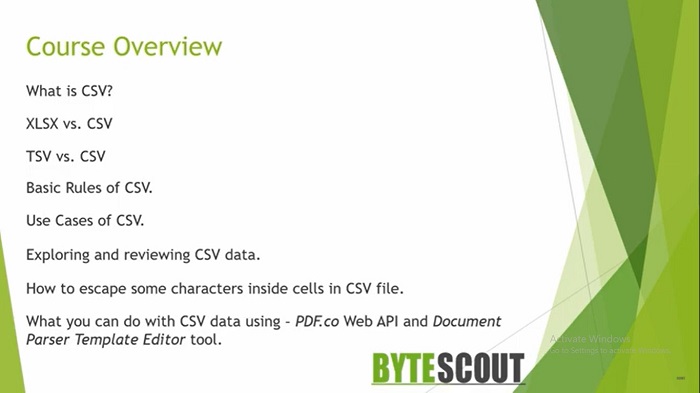Essential Secrets of CSV
Welcome to this course Essential Secrets of CSV. CSV has become a very common way to exchange tabular or tabular-like data between software applications. It is a familiar and simpler way to represent mostly Text in tabular form since it works reasonably well with spreadsheet applications.
While it might be more common for new applications to use XML or JSON to transmit data, but many industries are still using CSV for their use case. For example, an e-commerce business that buys customer data from a social media website. The social media site would likely send the customer information to your database in CSV format to export or import. Let's explore how CSV works and what we can do with CSV data.

Some of the major topics you will learn about in this course are; what is CSV and why CSV appear? How it differs from XLS/Excel and its advantages over XLS. We will see how it differs from TSV (tab-separated values) and then we will understand some basic rules of CSV. We will see some use cases of CSV, explore CSV in more detail, and review CSV data.
Then we will see what if CSV data itself contain double quotes or newline characters. We'll see how to escape them. Then we will read, manipulate CSV data using the PDF.co web API and document parser template editor tool provided by ByteScout. In this course, I will assume that you have some degree of technical experience. Let's jump into the course and hope you will join me on this journey to learn CSV.
Other useful articles:
- CSV and Where It Is Used
- Essential Secrets of CSV
- Writing CSV - Secrets of CSV
- A Real-World Example of CSV Usage with PDF.co Cloud API
- Change Default CSV Separator Using Windows Culture Settings
- Escape Characters - Secrets of CSV
- Manipulate CSV file content using JavaScript
- Real-World Example of CSV Usage with Document Parser Template Editor
- Where Large CSV Files are Available and Where They Are Used